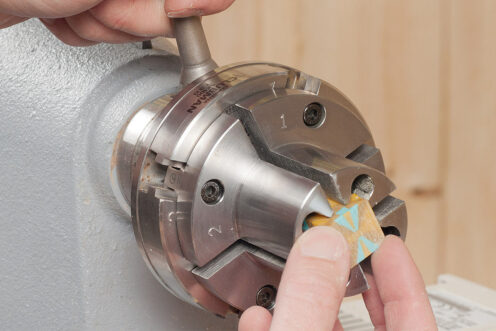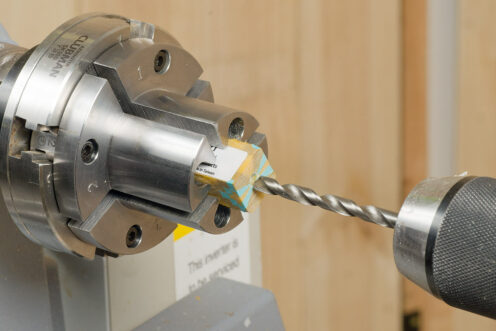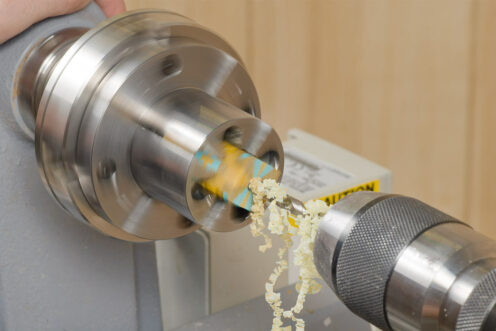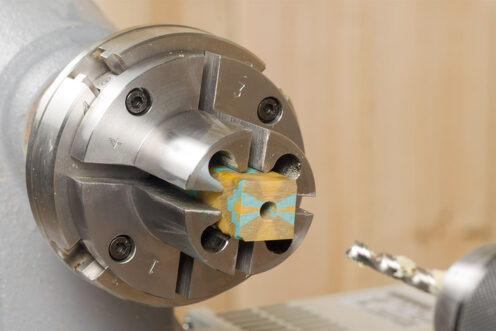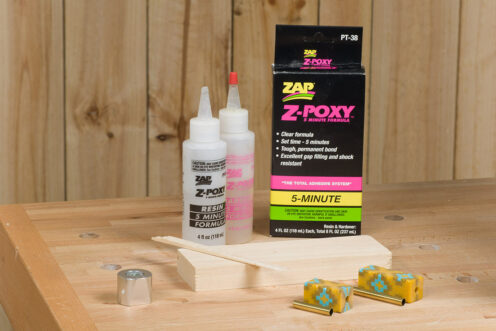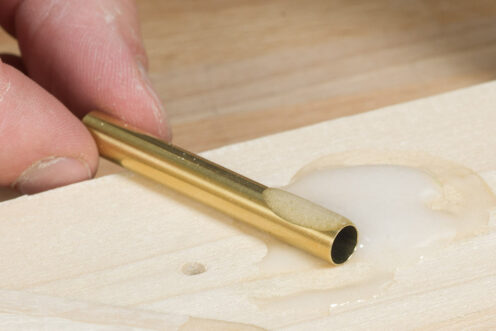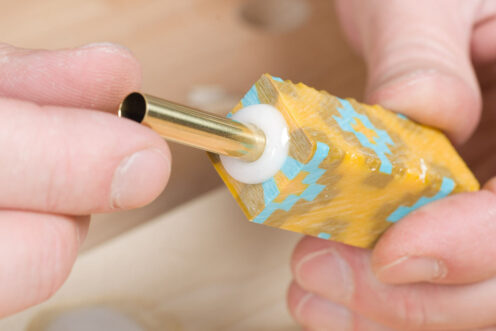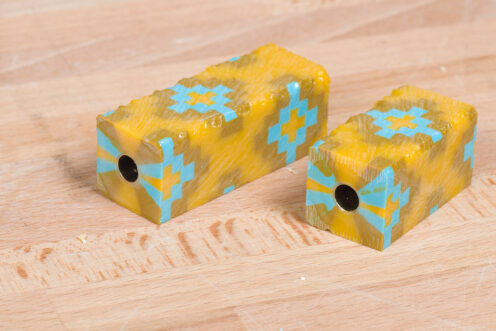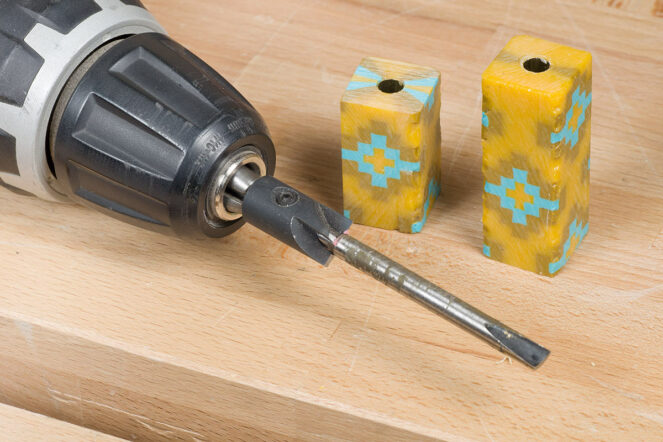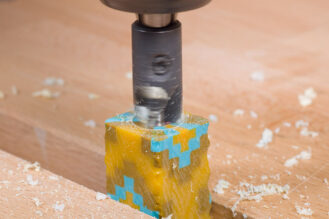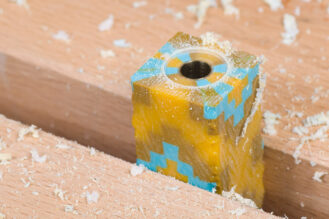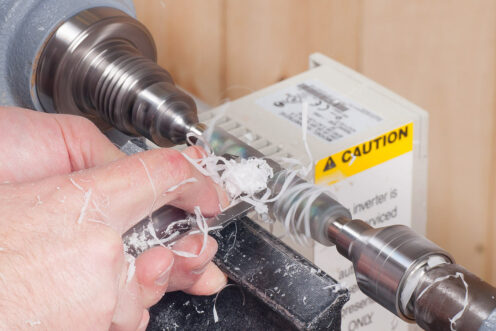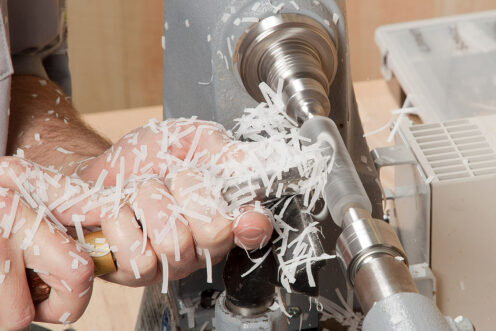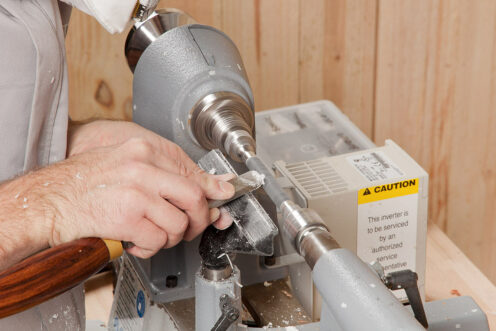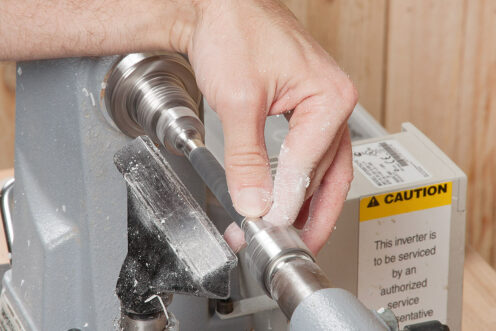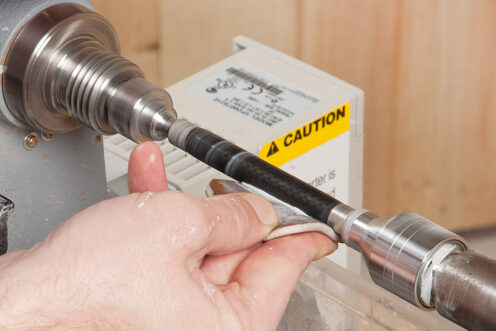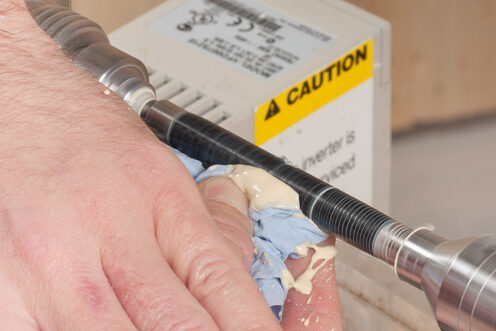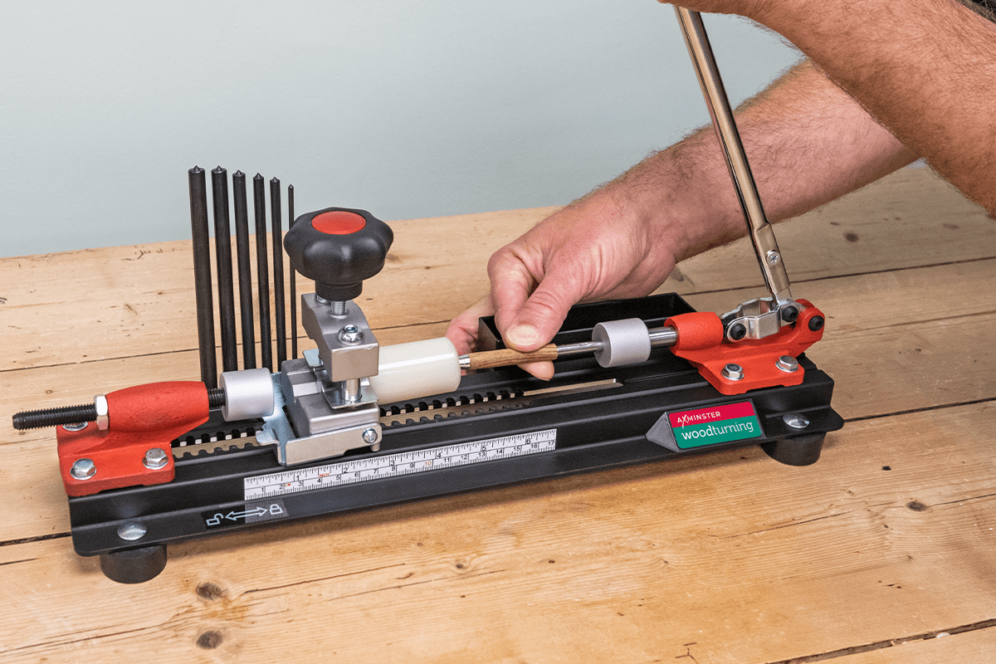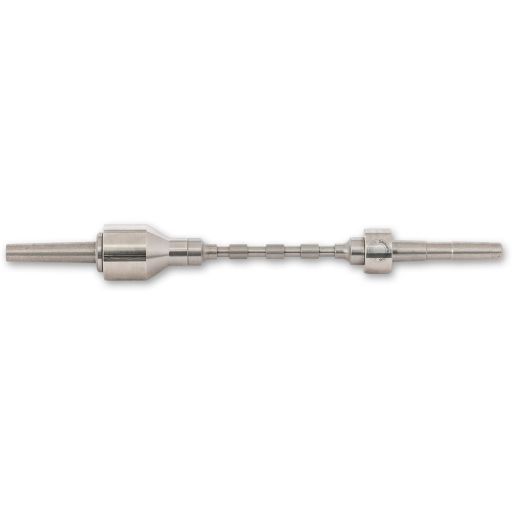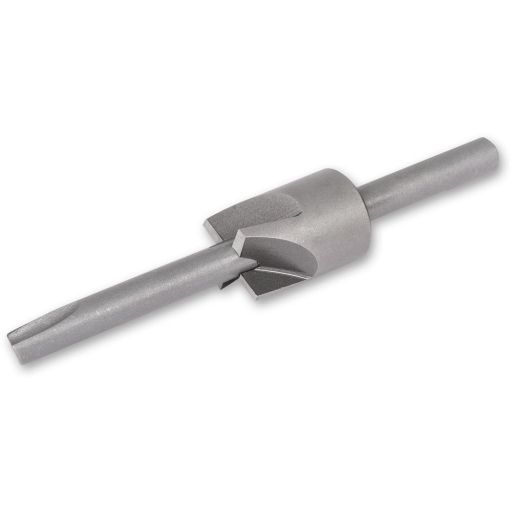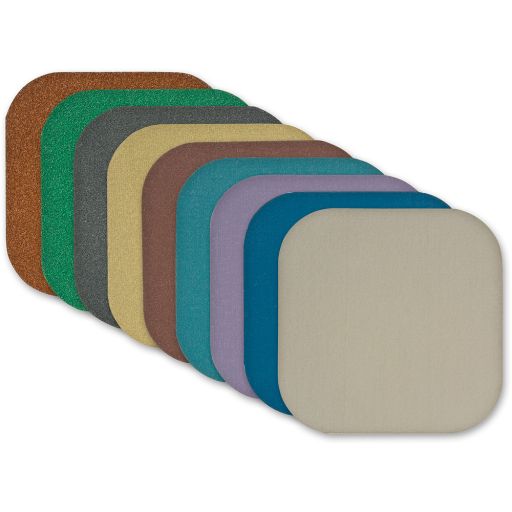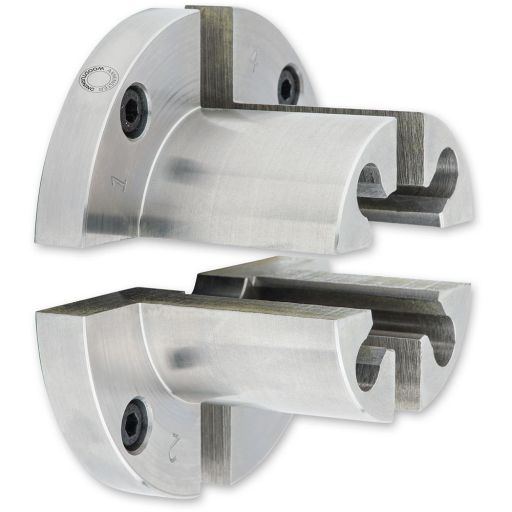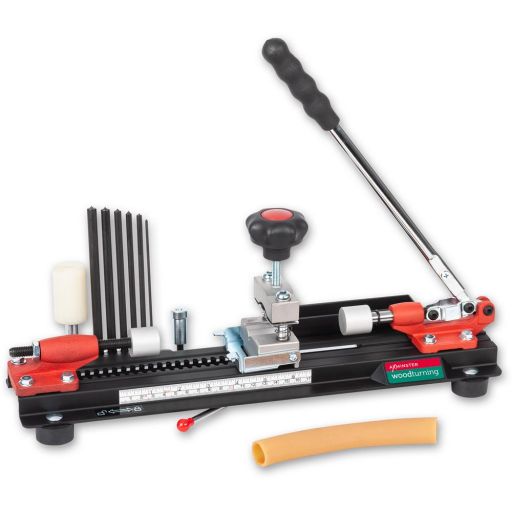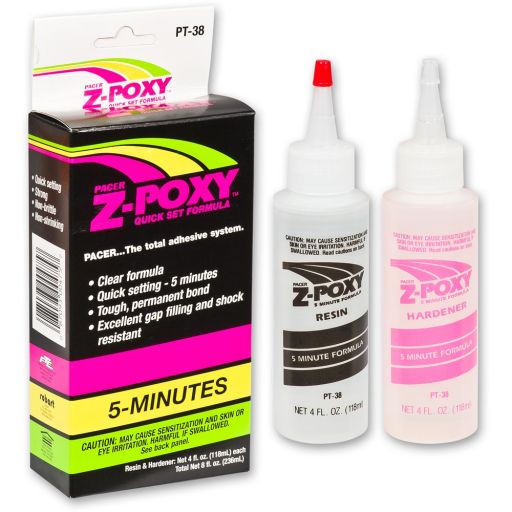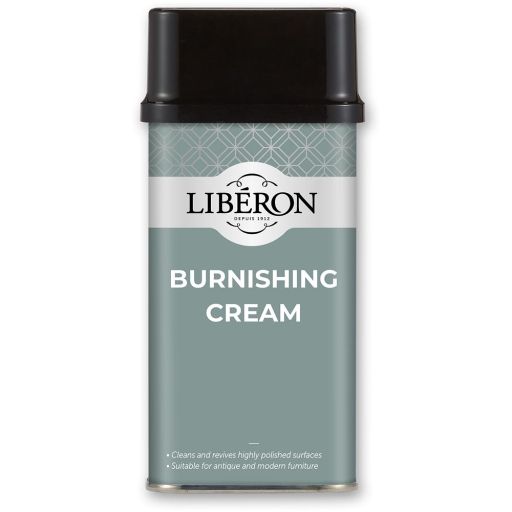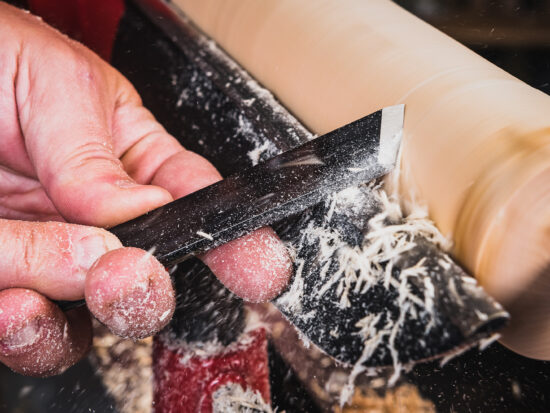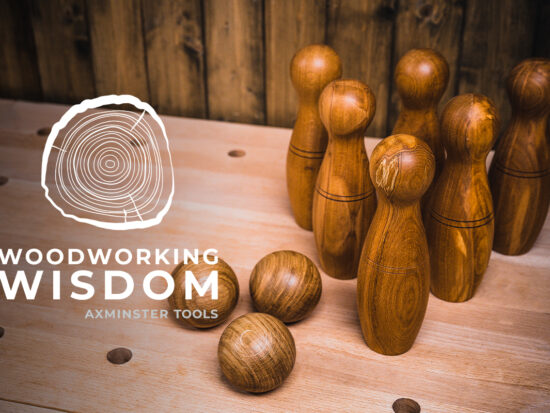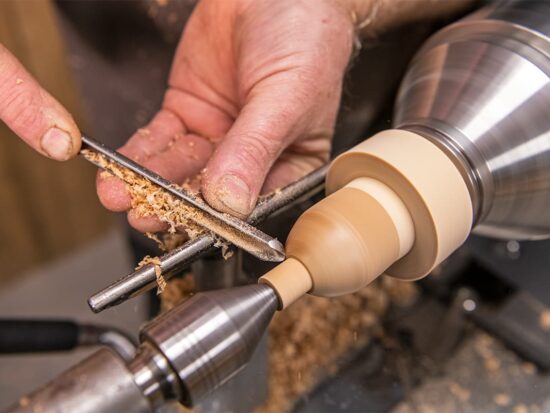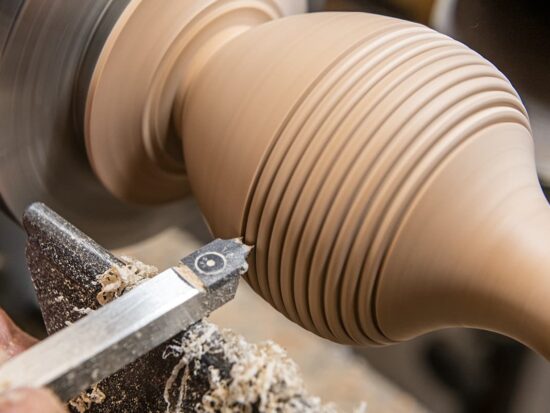How To Make A Pen | Woodturning Projects
Pen turning is one of the more popular types of woodturning. Whether you are a beginner or a seasoned pro, there’s something uniquely satisfying about turning your own writing pen. Plus, with a huge selection of pen blanks and pen kits to choose from you can create a pen that is suited to you and expresses your own unique style. Want to learn more? Why not watch our videos and read this helpful guide and be shown step by step how to woodturn a handcrafted writing pen of your own.
What you'll need
Watch how to prep and turn pens
Single Barrel
Double Barrel
Step by Step Guide to Pen Turning
Step 1 - Drilling the Blanks on a Lathe
Mount the blanks in the chuck spigot or pen jaws and turn a pilot hole in the centre of the vice.
Mount the drill bit in a Jacob's drill chuck in the lathe's tailstock and slide the assembly so the end of the drill bit lines up with the pilot hole. Lock the tailstock in position.
Start up your lathe at 500 rpm and drill through the centre of your blank. Remove any build up of materials around the drill bit.
Once drilling is complete, remove the drill from the blank by sliding the tailstock back, then switch off the lathe. Remove the blank from the chuck.
Top Tip!
If you have a pillar drill you can drill the blank/s using the Quick Action Pen Blank Vice.
Step 2 - Gluing the Blanks
Use Z-Poxy 5 or 30 Min Epoxy Resin or another of your choice. Place equal amounts of resin and hardener on a scrap piece of wood and then mix the two well.
Rotate the brass tube(s) and spread the glue equally around.
Insert the brass tube into the pre-drilled hole in the blank and then push the tube in using another brass tube or piece of wood.
Remove any excess glue and place the blank down to harden. Leave for 30 minutes.
Step 3 - Barrel Trimming
Use a barrel trimmer to remove excess glue from the blanks. Insert the drill shaft down into the brass tube and power up the drill.
Remove the excess glue to square up the ends of the barrel.
The end of the blank is left clean and square.
Step 4 - Lathe Assembly
If you are using the Adjustable Pen Mandrel, fit the tapered end into the headstock. Make sure the tapered bushings are in place to protect the collet using the correct bushing set. If you are using the Axminster Woodturning Compression Pen Mandrel insert the fixed tapered end into the headstock. Assemble the bushings and pen blank(s) as illustrated. Bring the tailstock with the live centre into contact with the mandrel which will centre the whole assembly. Clamp the tailstock in position. Tighten the end collet and the end nut if using the Adjustable Pen Mandrel.
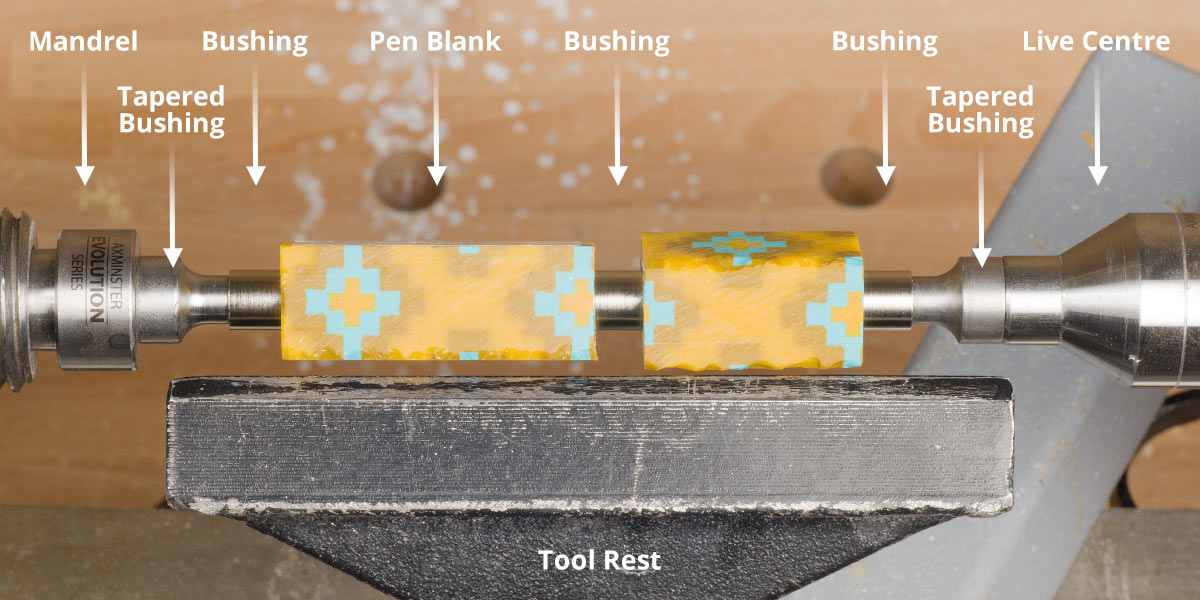
Step 5 - Turning the Blank
Rough down the pen blank(s) using a 1/4" bowl gouge. The flute of the gouge should face 2 o’clock with the handle of the chisel held low and the tool presented at a 45° angle to the blank. Alternatively, you can use a 3/4" roughing gouge to rough down the pen blank(s).
Step 6 - Planing Cut
Adjust the rest to centre height and use the bottom half of the cutting edge of a 1/2" skew chisel to take small, clean cuts. Start the cut with the bevel rubbing then lift the handle until you see dust or shavings appear. Continue this along the length of the pen blank until it’s slightly bigger than the diameter of the bushings.
Step 7 - Sanding and Finishes
Acrylic and Polyester
Start by sanding with the 600g abrasive and then use the Micro-Mesh (211364) wet. Keep wetting the Micro-Mesh as you don’t want to allow dust to melt back onto the pen blank. Finish with burnishing cream on the 1200g Micro-Mesh and then use a rag to buff.
Timber
Sand up through the grades with the cloth backed abrasives, starting at 240g to 400g and then 600g. Finish with the 1000g Wet & Dry abrasive and the friction polish.
Assembly
Please see instructions supplied with the pen kit or visit our website to view the User Manual as the assembly will vary depending on the pen you purchase.
-
Axminster Woodturning Compression Pen MandrelFrom £59.98 £49.98
-
Axminster Woodturning Barrel TrimmerFrom £13.98 £11.65 From £11.88
-
Micro-Mesh Soft Touch Abrasive Pads 50 x 50mm - Mixed (Pkt 9)From £17.98 £14.98
-
Axminster Woodturning Pen JawsFrom £89.98 £74.98
-
Axminster Woodturning Deluxe Assembly/Disassembly Pen PressFrom £114.98 £95.82
-
Z-Poxy Epoxy ResinFrom £25.98 £21.65
-
Liberon Burnishing CreamFrom £11.48 £9.57
Want to learn more?
If you enjoyed this helpful guide and are looking for more beginner projects why not have a look at our How To Make A Rolling Pin with Colwin Way. Or if you're a more experienced woodturner, why not explore box making with our in-house expert Jason Breach as he shows us How To Make a Bespoke Wooden Box.



